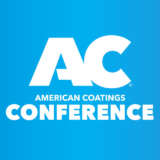“From Highly Active Biocides toward Lower Use Rates of Safer Biocides”
Regulatory pressures are challenging the industry

Ingo Krull
Director Technical Service EMEA & Americas at Arxada
Ingo Krull, Director Technical Service EMEA & Americas at Arxada, outlines novel developments in biocides for in-can preservation and relevant regulations for biocides in paints and coatings. He also shares his opinion on biocide-free solutions.
What novel developments in biocides for in-can preservation do you consider promising and why?
Due to regulatory pressures, the industry is currently moving away from highly active biocides toward lower use rates of safer biocides. With this comes an increasing challenge to achieve effective preservation that puts an emphasis not only on plant hygiene, but also on solutions that improve biocidal product performance to ensure the quality and shelf-life of finished goods leaving the factories. New performance additives that augment product stability and quality are needed to ensure effective preservation. Major developments toward the next generation of in-can preservation will come from closing the knowledge gap between performance additives and their impact on maintaining paints and coatings quality and performance. New biocidal actives are currently not likely due to high costs, long development timelines, and high degree of uncertainty in the regulatory evaluation process.
Which regulations are relevant for biocides in paints and coatings, and what are the impacts?
The main regulatory impacts on the biocides industry come from the European BPR, US EPA, and Canadian PMRA. Customers’ desire for global products is becoming significantly more challenging as regulators restrict or ban existing active substances. Based on recent regulations around VOC, skin sensitization labeling thresholds, ecotoxicity, and CMR opinions, only a handful of active substances remain available for global use. This makes harmonized protection of certain industrial formulations extremely challenging, and so we are seeing customers utilize our advanced technical services more frequently to help them meet these tough preservation challenges.
What do you think about biocide-free solutions?
Biocide-free solutions remain niche and come with concerns around quality and product shelf-life. Application is mainly for the products naturally resistant to spoilage, such as products with water-activity or high solvent content.
In paints and coatings, ‘biocide-free’ is typically achieved by driving the pH to >11, which is thought to limit the growth of bacteria and fungi.
However, while the paint is resistant to normal paint contaminants (e.g., Pseudomonas, Burkholderia, and Enterobacter), new alkali-tolerant organisms are emerging, and are able to cause major quality issues in manufacturing plants as well as during storage and use of the finished product. Today, chemical preservation continues to deliver the most effective solution for excellent product quality, performance, and shelf-life.























